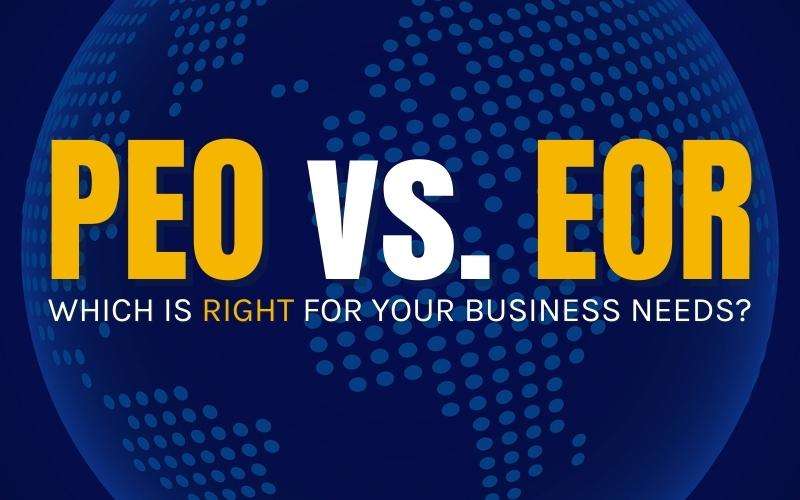Difference between PEO and EOR?

EOR (Employer of Record) and PEO (Professional Employer Organization) are two types of HR outsourcing services.
PEO and EOR services help companies manage their workforce, but they serve different functions and operate differently.
Here’s a detailed comparison between PEO & EOR:
Employer of Record (EOR)
Definition:
- An EOR is a third-party organization that becomes the legal employer of a company’s workforce.
Primary Function:
- The EOR takes on the legal responsibilities associated with employment, such as payroll, taxes, benefits, compliance with local labor laws, and other administrative tasks.
Control:
- The client company maintains control over day-to-day management, tasks, and activities of the employees, while the EOR handles the legal and administrative employment responsibilities.
Use Cases:
- EOR services are often used by companies expanding into new geographical regions where they do not have an established entity.
- Ideal for hiring remote employees or contractors in different countries.
- Useful for short-term projects or temporary staffing needs.
Liability:
- The EOR assumes legal liability for employment-related matters, reducing the client company’s risk.
Professional Employer Organization (PEO)
Definition:
- A PEO is a company that provides comprehensive HR services to small and medium-sized businesses through a co-employment arrangement.
Primary Function:
- The PEO handles a wide range of HR functions, including payroll, benefits administration, compliance, worker's compensation, and risk management.
Control:
- There is a co-employment relationship where both the client company and the PEO share certain employer responsibilities. The client company retains control over business operations and employee management, while the PEO manages HR functions.
Use Cases:
- PEO services are typically used by small to medium-sized businesses looking to outsource their HR functions to improve efficiency, compliance, and access to better employee benefits.
- Ideal for companies looking to streamline their HR processes without losing control over the direct management of their employees.
Liability:
- The liability is shared between the PEO and the client company. The PEO assumes responsibility for compliance and other HR-related risks.
Key Differences
Scope of Services:
- EOR focuses on becoming the legal employer for compliance and administrative purposes, especially useful for international hiring.
- PEO offers a broader range of HR services through a co-employment model, typically for domestic operations.
Legal Employment:
- With an EOR, the legal employer is the EOR itself.
- With a PEO, there is a co-employment relationship where both the PEO and the client company are considered employers.
Target Users:
- EORs are often used by companies expanding internationally or hiring remote workers.
- PEOs are used by small and medium-sized businesses looking to outsource their HR functions to improve efficiency and compliance.
Regulatory Compliance:
- EORs ensure compliance with local laws in different countries or regions, reducing the complexity for the client company.
- PEOs ensure compliance with domestic employment laws and regulations.
By understanding these differences, companies can choose the right solution based on their specific needs, whether they require international hiring and compliance assistance (EOR) or comprehensive HR management services (PEO).
- Share This Job



Write A Comment
No Comments